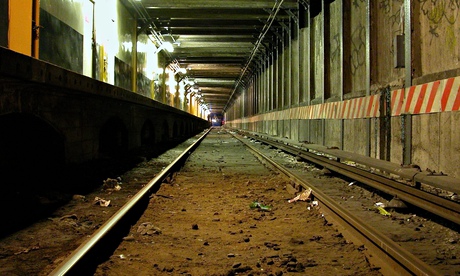
Let's try to get things off to an upbeat start. Louis Armand's Cairo is an ambitious book. It has multiple narratives set over dozens of locations where time is fluid, human biology and computer technology are intertwined and everyone has weird names like Joblard, Shinwah and Johnny Fluoride. It is unflinching in its portrayal of human greed, urban decay and nasty rats. It attempts to put forward complicated ideas about technology, about space-time and about the fact that our own present is looking ever more like a dystopian future.
Armand is also admirably unwilling to make things easy. Those disparate narratives appear (as one reviewer on the Not the Booker voting page put it) to be "hyperlinked" – and there are strong hints at an over-arching conspiracy theory centred around a boy called Momo. But there are never any clear connections, easy answers or simplistic explanations. Armand is brave enough to challenge his readers. For that at least, we should salute him. Part of me is glad that someone should attempt to write a book like this one and that a small press like Armand's publisher Equus should have the courage to put it out.
Another part of me, however, has seen it all before. I've read Ballard and Burroughs and William Gibson, and even if I hadn't I imagine most of Cairo would still feel like so much old hat. One of the reviews recommending Armand for the Not the Booker suggested that the book is:
"A riotous exploitation sci-fi noir whose action shifts from London to New York to the Australian outback, Prague and a post-apocalyptic Cairo. This novel has it all, conmen, evil doctors, rats, Egyptian artifacts, meteors, time-traveling kung-fu assassins, dwarfs, exploding heads, soy vindaloo and a long list of other extraordinary renditions."
Does any of that seem fresh to you? Me neither. You probably won't be surprised that the novel also contains an albino and an attractive female assassin. And yes, regarding the latter, the inevitable happens. To his partial credit, Armand manages to hold off involving his female lead in a lesbian clinch until page 256 – although he starts dropping heavy-breathing hints as early as page 113. While I'm scrabbling for positives here, I could also note that at least the author doesn't indulge himself with too many salacious details about his Sapphic moment. But in spite of this rare touch of restraint there's always the faint clack of one-handed typing about Cairo. It's crammed with violence, puking, drugs, wounds and women without any clothes on. It's all too redolent of a certain type of male writing.
There are other problems. Armand's ambitious multi-part structure generally overwhelms him. Huge chunks of the book are given over to scene-setting as Armand feels obliged to explain where we are and what has been happening each time he picks up the various narrative batons. Here's an all too typical chapter opening:
"An intersection at the west end of Canal Street. Night. Traffic backed out of Holland Tunnel, jamming into the river, the distant lights of Battery Park Annex oozing down it. Wind And Rain. Osborne huddled against a lampost in a worn brown leather trenchcoat … "
It would be easy enough to argue that this is part of a deliberately disorienting effect, with the fractured narrative reflecting the broken reality of the novel. But it's even easier to say that it is boring. An unhealthy proportion of the book reads like the "how was your journey?" conversation, bolstered by lengthy digressions about traffic snarl-ups. In fact, the descriptions in Cairo feel especially monotonous and repetitive because they're all part of that tired, dirty, cliche-ridden dystopia. I'm actually more interested in the roadworks on the A11 than in this insubstantial nowhere.
That chapter opening I just quoted also highlights Cairo's other major defect: bad prose. Those one and two-word sentences quickly grow tiresome. Armand elsewhere has other devices that suggest a straining after portent, but produce instead discontent. Especially irritating is his repeated use of elliptical half-sentences: "The remains of the old railhead, where Afghan camel trains had once set out across a desert half a continent wide." Main verbs may be conventional - but they are useful.
There's plenty more to moan about elsewhere. There's verbiage. Characters can't just read headlines on front of the New York Times, they have to be: "the morning's headline blazoned in two-inch serif across the front page". There's cloth-eared dialogue. I particularly winced at the way people in the London section of the book keep on referring to each other as "old chum". There's malapropism – although I did enjoy "emphaticness" in the place of "emphasis". There are dead-in-the-water metaphors – here's a painfully literal example: "Millennium Plaza was a post-communist horror jutting up from the expanse of water that was now northern Prague, like a floating glass ziggurat." Is it not, in fact, actually a floating glass ziggurat? Or does it just look as though it's floating? In which case, to which other floating glass ziggurats am I supposed to be comparing the building? Either way, it doesn't work. There are also simple mistakes: "She wondered where Margarita's people where."
At this point I know that I'm complaining about relatively minor niggles – but the trouble is that there are so many of them they dominate the reading experience. The result is painful. Armand should be applauded for aiming high in this book . But it would have been far less tedious to read if he'd taken more care of the basics.
Next time: The Last Tiger by Tony Black

